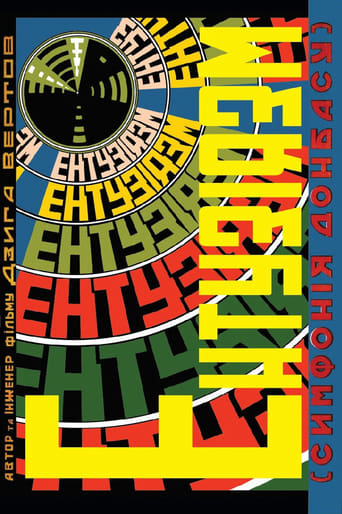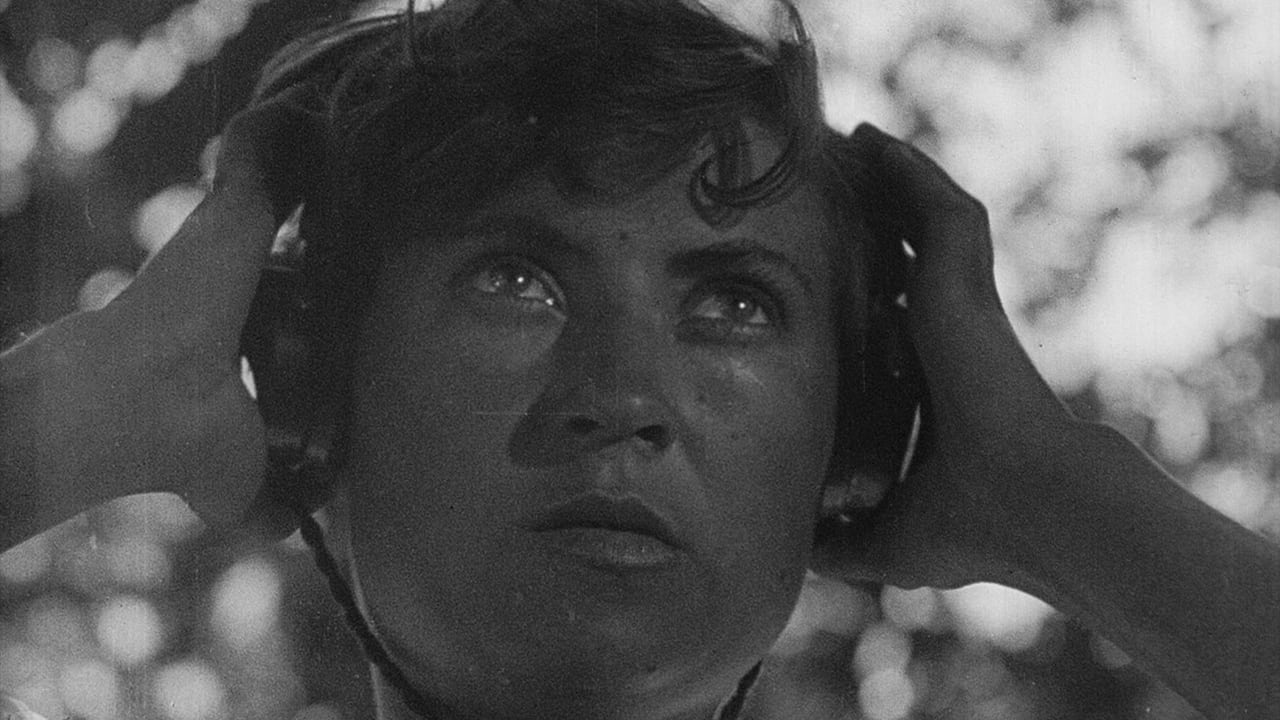Pierre Radulescu
Some see Vertov's Enthusiasm as a masterpiece. Many others consider it a failure. I think that even as a failure Enthusiasm is a great experiment, one of the greatest in cinema history. It was Vertov's first sound film. And he tried with the soundtrack to do the impossible. In Человек с Киноаппаратом, the camera had been the main actor (maybe the only actor), constructing the film in front of the spectators' eyes. Here in Энтузиазм, the sound was the only actor, controlling an insane counterpoint of ballets on industrial themes, radio and railroad infrastructure, political meetings, huge demonstrations, coal exploitation, steelmaking, kolkhoz with tractors and stuff; all these seamlessly metamorphosing one into another, becoming the avatars of a unique reality. And as a symbol of sound supremacy, the power of the radio.This movie is a perfect demonstration of конструктивизм: the old culture (religion and alcohol - here Vertov was the most orthodox avant-gardist) replaced by a new culture, where the art (of course, Constructivist) is generating the whole new society: policies, infrastructure, industry, agriculture, and above all, Stalinist enthusiasm. A huge difference from the actual reality, which also meant forced labor, Голодомо́р, repressions (even one of the political leaders of the epoch, showed in the movie at a demonstration, Stanislav Kosian, the infamous organizer of the Ukrainian famine in the thirties, would become himself a victim of the Stalinist purges, in 1939). Carloss James Chamberlin is right: Vertov believed in his own reality, based on his filmic montage, always looking through his camera and at his strips of film. But that's the way the history goes, with the Avant-garde of the cinema: all of them, Eisenstein and Vertov among others (and also Riefenstahl by the way, on the other side) were politically very committed, for better or worse.And as an irony of history this ultra-Communist film was not agreed by the Soviet officials either: the epoch of Socialist Realism was beginning, and Constructivist art had become to be viewed as a bit too formal, a bit too decadent, definitely too unhealthy, in one word too bourgeois. Sic transit gloria mundi.
Balbec4
Enthusiasm, much less well-known than Dziga Vertov's other major works Kino-Eye and The Man With a Movie Camera, is nevertheless well worth a look.The movie is subtitled Symphonia of the Donbass and portrays the implementation of the first five year plan in the industrial regions of Ukraine. If that sounds un-exciting, don't be put off – this is an amazing movie that places sound – the sounds of pulleys and railway wagons, steel plants, the brass bands of the Young Pioneers and the Army, of tractors in the Kolkhoz – at the forefront of everything.Framed by close-up shots of a young women (later shown to be an artist making the finishing touches to a bust of Lenin) listening to the radio via earphones, the soundtrack of the film takes on a life of its own. Its synchronization with the visual content of the film creates a highly atmospheric portrayal of work and of constant, excessive noise – not just the noise of the work itself but of the streets, with their endless parades and ubiquitous brass bands.Made in 1931, the film includes more overtly propagandistic content than The Man With a Movie Camera, made in the marginally more liberal (or at least less rigidly controlled) Soviet Union of 1929. However, for me the propaganda element is rendered almost irrelevant by the highly original soundtrack. The ponderous narrative interventions ("Here come the enthusiasts") are ultimately subsumed in the clatter of machine hammers and coal conveyors, brass music and public announcements, simultaneously distancing you from the "enthusiasm" on display and drawing you in to a kind of hyper-real portrayal of physical life (hard work, the streets, demonstrations) that makes you suddenly aware of the un-real nature of everyday urban sound when you leave the cinema. No wonder Soviet critics hated it.
maple-2
The first sound film of Dziga Vertov, this is a tribute to the first Soviet 5 year plan, opening with the forcible transformation of churches to social and political clubs, filming work in the coal mines of the Donbass region in eastern Ukraine, capturing the sights and sounds of steel and locomotive works, and finishing with some scenes of harvests in the Ukraine countryside. Most of the focus is on work and the potential glories of the new Soviet citizens who promise to exceed the quotas of the five year plan. This is a marvel mostly because of Vertov's mastery of the early sound technology which required cameras that weighed over a ton. With speeches and inter-titles shifting between Ukrainian and Russian, there is no narrative, no actors, no script and only some visual references to Eisenstein's fictional works. It is easy to see why this film was more praised outside of the Soviet Union than inside and why so few of the workers filmed had any interest in watching it.
.mov
One of the most astounding visual narratives i have ever had the pleasure of witnessing. The simple, yet highly intricate weave of this film still stands as a daunting challenge to the visual baby food served up by Hollywood. Perhaps the nearest we have been since this film, were the efforts of Truffaut and Godard in the late sixties. Dig this one up, its in the archives, but you'll never see anything like it ever again.


 AD
AD
